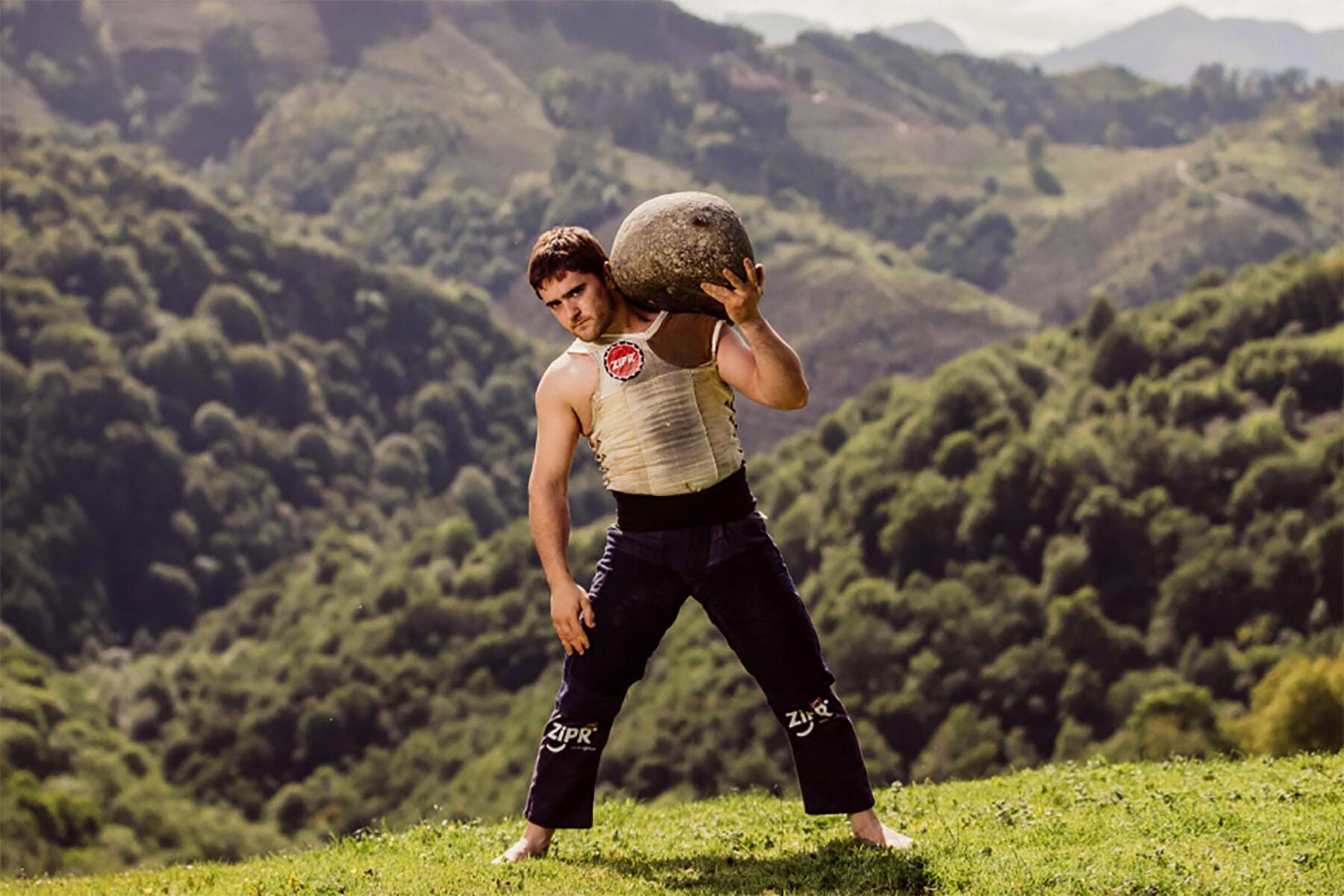What started as placing bets on farmers who could plow the fastest has evolved into an internationally-recognized sporting competition.
In Spain’s diverse regions, the misty mountainous Basque Country stands out as an outlier both culturally and topographically. Here, Spanish is rejected in favor of Euskera, one of the oldest living languages in Europe whose origins remain unknown. The Basque Country also has one of the oldest sports, too: stone lifting or “Herri Kirolak,” as it’s called in Euskeda. Herri Kirolak is one of the many rural sports that make up Harrijasotzaile, a series of physical challenges that derive from everyday pastoral tasks like tree felling or plowing that have now become officially recognized as a rural sport.
The competitive nature of the Basque people combined with their desire to keep rural traditions alive means that these simple tasks are now a bonafide part of their national heritage. Like the native Basque language, these rural sports are fiercely defended and honored. Now, town squares—ranging from Bilbao to Biarritz—fill up on weekends with spectators eager to see competitors lug, drag, and huff their way to victory in some 20+ sports that make up the Harrijasotzaile challenges.
The sports, of course, have changed dramatically from their humble origins on the hillsides of Basque farming towns. Back then, bets were placed on those who could plow a field the fastest, throw an ear of corn the furthest, and lift the heaviest boulders. Today, these rural competitions have evolved into heavily sponsored events where athletes compete on an international stage. This photo essay takes us on a journey to meet some of the sport’s protagonists who are leaving no stone unturned to keep the Basque Country’s sporting traditions alive.




